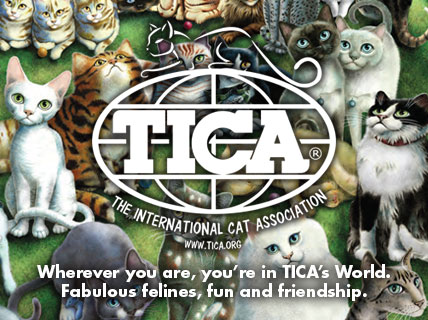
Shelter Animals Count Numbers- What Do They Mean for Us?
May 20, 2018
The Silly Season- Happy Memorial Day!
May 27, 2018
“I really believe animals have such an ability to get people. They have an intuitiveness which I find amazing.”
Michele Tilford has over five years of experience as a cat-assisted therapy handler—but when she first became interested in cat-assisted therapy, the only programs she could find were for dogs. Eventually she connected up with a service dog trainer who also happened to be a Ragdoll breeder. The woman agreed to help Michele train one of her own kittens, later adopted by Michele, and the rest is history.
Michele explains that one of the biggest keys in deciding whether or not your cat might be a good therapy cat is his or her personality. A therapy cat should ideally be calm, curious and outgoing. The cat can then be trained to become comfortable with unfamiliar surroundings and with wearing a harness, being in a carrier, and traveling.
There are three different groups of therapy animals, Michele explains. One is what are called emotional support or comfort animals. These can be any kind of animal and are generally just a personal pet that receives no training. All that is needed to certify a comfort animal is generally a doctor’s note.
An animal-assisted therapy animal is one that has some basic training and works as part of a human-animal team. Cats in this category—like Michele’s cat Kokoro—need to be able to understand a couple of commands, be leash and carrier trained, and be comfortable with loud noises and being touched.
The third category is service animals. These are highly trained animals who are trained to assist people with specific tasks. Right now in the United States, only dogs and miniature horses can be registered as service animals.
Michele explains that many other countries use cat-assisted therapy far more than we do here in the United States, where cats still seem to be maligned as therapy animals. Michele and others are working hard to change that mindset, however, by bringing cats to a variety of institutions like retirement homes, schools, and even libraries, where cats assist with reading programs for kids. Michele is a firm believer that cats can bring a huge benefit to the people they visit!
If you are interested in training your cat as a therapy cat, Michele encourages people to look up Love on a Leash and Pet Partners to check out their requirements for certification. Any cat can be a therapy cat; they don’t need to be purebred or have any extraordinary characteristics. In fact, Michele states that 98% of the therapy cats she knows were rescued from shelters! Getting your cat certified does require a bit of commitment, but Michele assures those interested that you will get every bit as much from the experience as the people you and your cat visit!
To learn more, visit facebook.com/TherapyCats, or you can join the invite-only Facebook that Michele helped found at facebook.com/groups/TherapyCats.of.the.world.











